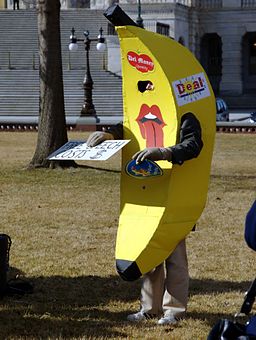The Root of the Matter

Ginger plants (Zingiber officinale). Photo by Ramjchandran.

A ginger (Zingiber officinale) rhizome on a Delft blue European porcelain plate. Photo by Lucyin.
— Izzy




The effect could be seen in national television advertising of the time, where only a few big brands could afford to compete. Even the beers on sale that did not appear to be sub-brands of the major players were not much different than them in flavor and makeup, only in price, usually being cheaper knock offs. To get a taste of something different and a little better in the late 1970s, American beer drinkers turned to European imports. The beer market had become like the wine market, where American brands were viewed as okay for everyday drinking, while the European product was considered superior in quality.

The other thing that has skewed the craft beer movement is the tendency for snobs and macho men to take over and ruin the fun for some of us. The same culture that has made spicy food its domain seems to appeal to a minority of brewers and beer drinkers who always want to competitively up the ante on the hoppy bitterness of craft beers. That wouldn’t be that bad if it weren’t for the unfortunate side effect that these people tend to be snobs with undue influence on some consumers. “It’s so bitterly hoppy that it’s undrinkable,” the brow-beaten craft beer supporter complains. “Drink it and enjoy it, or you’re a philistine,” exclaims the snobby beer person, a category that didn’t exist until twenty years ago.
Beer Wars, a 2009 documentary by Anat Baron that examines how the big breweries have co-opted the market share of many smaller breweries.
Such people have been around for ages, trying to belittle others who are susceptible to their nonsense, all so that they can then feel more exalted in their self-proclaimed expertise. They’re usually men, and they have haunted wine circles in this country long before beer became a drink of anyone other than the common people. You can find them in restaurants which specialize in spicy foods, such as Thai, Indian, or Mexican, always advocating for heat regardless of flavor, because that’s the manly thing, you sissy. In a somewhat different way, they are also familiars of the online gaming community, and of computers in general, and long before that, when know-it-all males were still accustomed to getting their knuckles dirty with grease, the world of automobiles and mechanical contrivances.
Never mind them. The great thing about the craft beer movement of the last thirty years is that there are brewers now producing beers for every taste. If you still can’t find what you like, then the staple lagers of the big multinationals will always be available. Drink those if that’s your thing. If you do like the beers of the craft breweries, though, and you like the idea of supporting smaller businesses, please do read the fine print around the back of that cardboard six-pack package to make sure your dollars are going where you intend, and not into the coffers of the big watery lager breweries, pretending to be what they’re not.
― Izzy 
The economist Kate Raworth talks about growth in this animated short for the Royal Society for the encouragement of Arts, Manufactures and Commerce (RSA). She doesn’t use the term “cancer”, but the effects of out of control economic growth brings the term to mind.
The economic model that said the world’s resources were boundless was always a fantasy, but people were able to ignore that for many centuries while the population stayed well within the earth’s capacity to sustain it. Now we are pushing against those limits, yet the business owners at the top continue to insist there are no limits, because it suits their self-interest. In the natural world, populations of animals and insects boom and bust depending on the capacity of their habitat, which is in all cases more narrowly defined than it is for humans. Because humans have adapted to the widest array of habitats on the planet, it does not follow that our expansion can be limitless. The physical problem is population growth pushing earth’s resources to the breaking point, but there is also a mindset problem caused by those at the top of the economic pyramid pushing the snake oil of limitless growth.




“Let them eat cake!”
There is only one party in the United States, the Property Party … and it has two right wings: Republican and Democrat. Republicans are a bit stupider, more rigid, more doctrinaire in their laissez-faire capitalism than the Democrats, who are cuter, prettier, a bit more corrupt – until recently … and more willing than the Republicans to make small adjustments when the poor, the black, the anti-imperialists get out of hand. But, essentially, there is no difference between the two parties.
― Gore Vidal, from his 1975 essay “The State of the Union”.
Social reforms wrought from identity politics are all to the good, but as always in our culture the primary fixation should be on the money. Martin Luther King, Jr., understood this when he traveled to Memphis, Tennessee, in 1968 to speak to striking African-American sanitation workers. Without work and the personal dignity that comes from a living wage, people cannot begin to address their social situation and have the energy to improve their lot within society as a whole. For the poor and the middle class it all starts with money, and for the rich it ends there as well. The oligarchic elite take advantage of social issues like gay marriage to divide and distract the majority while they continue to concentrate wealth and power in their own hands. There are two financial reforms which would go a long way toward stemming the rising power of the corporate oligarchy and restoring power to the majority of Americans: reinstatement of Glass-Steagall or something very much like it, and the legislative or constitutional rescission of the Supreme Court’s Citizens United decision of 2010.
― Vita 